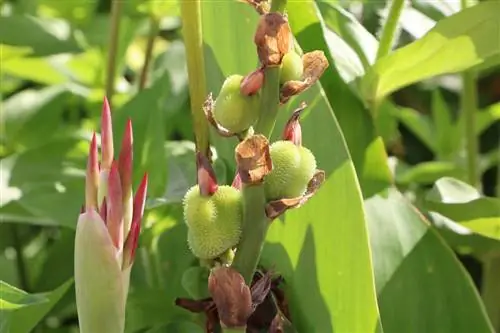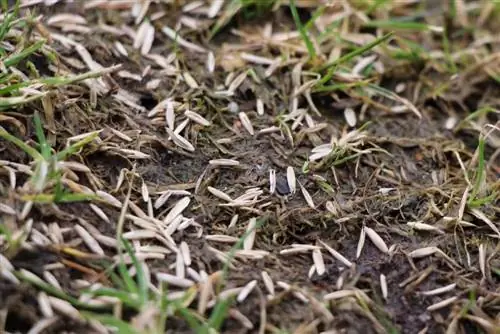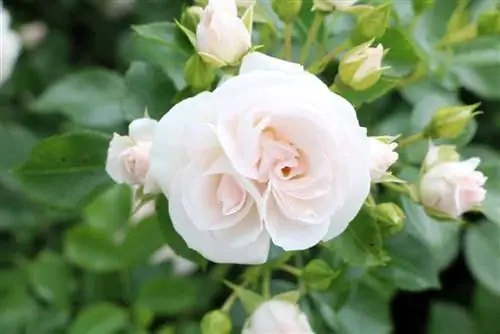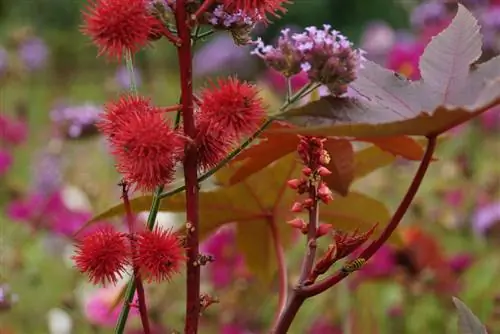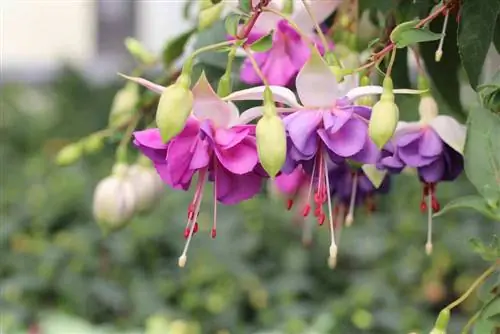- Author admin [email protected].
- Public 2023-12-17 03:39.
- Last modified 2025-01-24 12:45.
Propagate canna from seeds is relatively time-consuming and difficult. Nevertheless it is possible. The following instructions show how to do it and what to pay attention to when propagating.
Winning seeds
If you want to get seeds directly from a canna, you must first wait for the flowers to bloom and not remove them even after they have faded. Only when fruiting bodies have formed can they be removed and opened. A simpler alternative is of course to buy the seeds for cannas in stores or online.
Substrate
For germination you will need either:
- growing soil
- commercial potting soil.
- Herbal clay
Planting soil is recommended. This type of substrate contains fewer nutrients and therefore prevents sprouting too quickly. The young plants will grow slower but also stronger. The only potential disadvantage of soil with a low nutrient content is that the young plants will later have to be pricked out and transferred to potting soil.
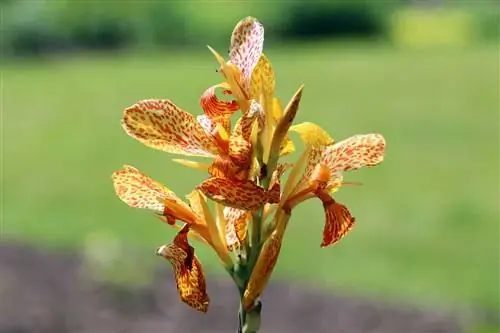
Step by step
In order for the seeds to germinate, you need the following utensils:
- Foil, glass or transparent plastic bags
- if necessary indoor greenhouse
- Planters
- Seeds
- Sandpaper
- Bowl
- Substrate
- Water
If these are ready, sowing can begin. These steps are necessary:
1. File off the shell
This step is optional. The canna seed beads have a very hard and relatively thick shell. This means it takes a long time for the seeds to sprout. However, this waiting time can be shortened if you help and slightly file off the black coating. The white interior should then shine through slightly. However, be careful not to injure the seeds when doing this. Place the seeds on sandpaper and rub them in circular motions.
2. Soaking
The seed beads are soaked in water for two days. The bowl should be in a warm and protected place so that the seeds swell and later sprout well.
3. Dispense
The seeds are placed on the chosen substrate and lightly covered with soil. Make sure there is enough space between the individual grains. It should be at least two centimeters. Otherwise it will be difficult to prick later.
4. Moisturize
If you want to grow cannas, the substrate must be kept permanently moist. You can place the growing containers in water until the soil is saturated or spray them with water.
5. Cover
So that the substrate and seeds stay moist, you should cover the planters. Glass plates, a greenhouse, transparent film or plastic bags are suitable for this. Ventilate it once a day to prevent mold from forming.
Tip:
If you choose to sand, wear work gloves, use a plate or spoon for the measure. This protects you from injuries. Also sterilize the soil. This reduces the risk of mold and rot.
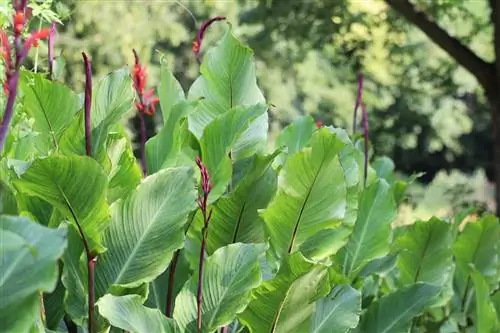
Location
Cannas need a warm, bright location. They should be protected and not exposed to drafts. For example, the following are ideal:
- the living room
- above the heater
- Window sills
If a place above the heater is not possible, an electric blanket can be used. Alternatively, you can use a heated mini greenhouse.
Pricking
When the canna seeds sprout and the young plants have reached a height of five to ten centimeters, they can be pricked out. This means that the plants are placed individually in separate planters. You should also change the substrate and switch from potting soil to potting soil.
Time
The best time for sowing is spring. However, you can grow the plants all year round. This requires the right temperature and sufficient light. However, 20 to 25 °C and a bright location can also be achieved with a heater or an electric blanket and a plant light.
Alternative to sowing
A quicker and easier way to propagate is to divide the roots. The tubers are cut through the middle. After the cut surfaces have dried, the newly created daughter plants are placed separately in the substrate and watered. Propagation is carried out in spring and is much quicker and easier than sowing.

